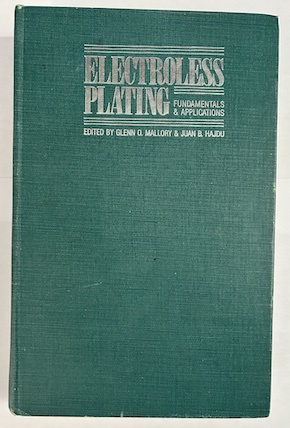
Curated with aloha by
Ted Mooney, P.E. RET

The authoritative public forum
for Metal Finishing 1989-2025

Thread 107/62
Q&A on corrosion-resistant Pump Shaft materials
Q. Concerning the pumps used in oil and gas industry, is it possible to manufacture the shaft of the pump from two types of stainless steel; one for dry part and the other for wet part, and both parts are joined together by direct drive friction welding process?
Hopefully to receive your response about ability to do such this investigation.
Kind regards
student - Duhok, Iraq
November 10, 2021
publicly reply to Anas Mattie
⇩ Related postings, oldest first ⇩
Q. I need to select a material for a pump shaft that will be the most resistant to buildup in electroless nickel. Any suggestions?
Paul R White- Lemont, Illinois, USA
2001
publicly reply to Paul R White
A. Paul,
Surely it's the pump Company that decides what the shaft material will be ... after getting all the right info.
Shafts, I believe, are invariably protected by 'plastic' 0-rings or seals. Some shafts have, for instance, CPVC cladding. Depends on the pump design, too.
Go and check with the pump Company ... they, after all, have more experience than anyone else regarding shaft integrity. Personally, I'd opt for a plastic pump... but then I'm biased. Shaft failure can occur immediately (pump running dry) or due to abrasive particles. Always protect the pump!
Cheers!

Freeman Newton [deceased]
(It is our sad duty to advise that Freeman passed away
April 21, 2012. R.I.P. old friend).
2001
publicly reply to Freeman Newton
2001
A. Hi Paul. Please post more details and possibly a sketch. Are you implying that you are pumping electroless nickel with this pump, or that you want to electroless nickel plate portions of a finished fabrication without the electroless nickel plating onto the shaft portion?
If you are pumping electroless nickel it may be more appropriate to use a mag drive pump. But if you need a metal shaft, you might use stainless steel and prevent the electroless nickel from depositing via an anodic protection system such as is used to prevent it from depositing onto stainless steel tanks.

Ted Mooney, P.E.
Striving to live Aloha
finishing.com - Pine Beach, New Jersey
publicly reply to Ted Mooney
A. Dear Paul:
If I understood right, you are trying to use the shaft in a pump for your E-N system. If so, let me tell you that my experience with in line pumps has never been good, stainless steel (all grades), titanium, etc., even with magnetic pumps equipped with ceramic shafts and graphite bushings (two of the most chemically inert materials). They all leak or eventually plate out and it's very difficult to strip them (one of them got so stuck that the graphite needed to be broken to let go). I overcame this situation with the centrifugal submersible plastic pumps equipped w/stainless steel shafts lined with plastic (Polypropylene is the choice). The motor and bushings are always above the bath level... piece of cake.
Guillermo MarrufoMonterrey, NL, Mexico
2001
publicly reply to Guillermo Marrufo
A. I have made thousands of shafts, nuclear, chemical etc, A company that I have done a lot of work for will quite often have a portion of the shaft rubber coated after the machining process. Another consideration that may save you money on exotic materials is to have the exposed portion of the shaft coated with a twin arc ( cold ) spray, we can spray almost any material over a lesser grade of shafting......Jim
Jim Boyko- Langley, BC, Canada
May 8, 2009
publicly reply to Jim Boyko
Q, A, or Comment on THIS thread -or- Start a NEW Thread
